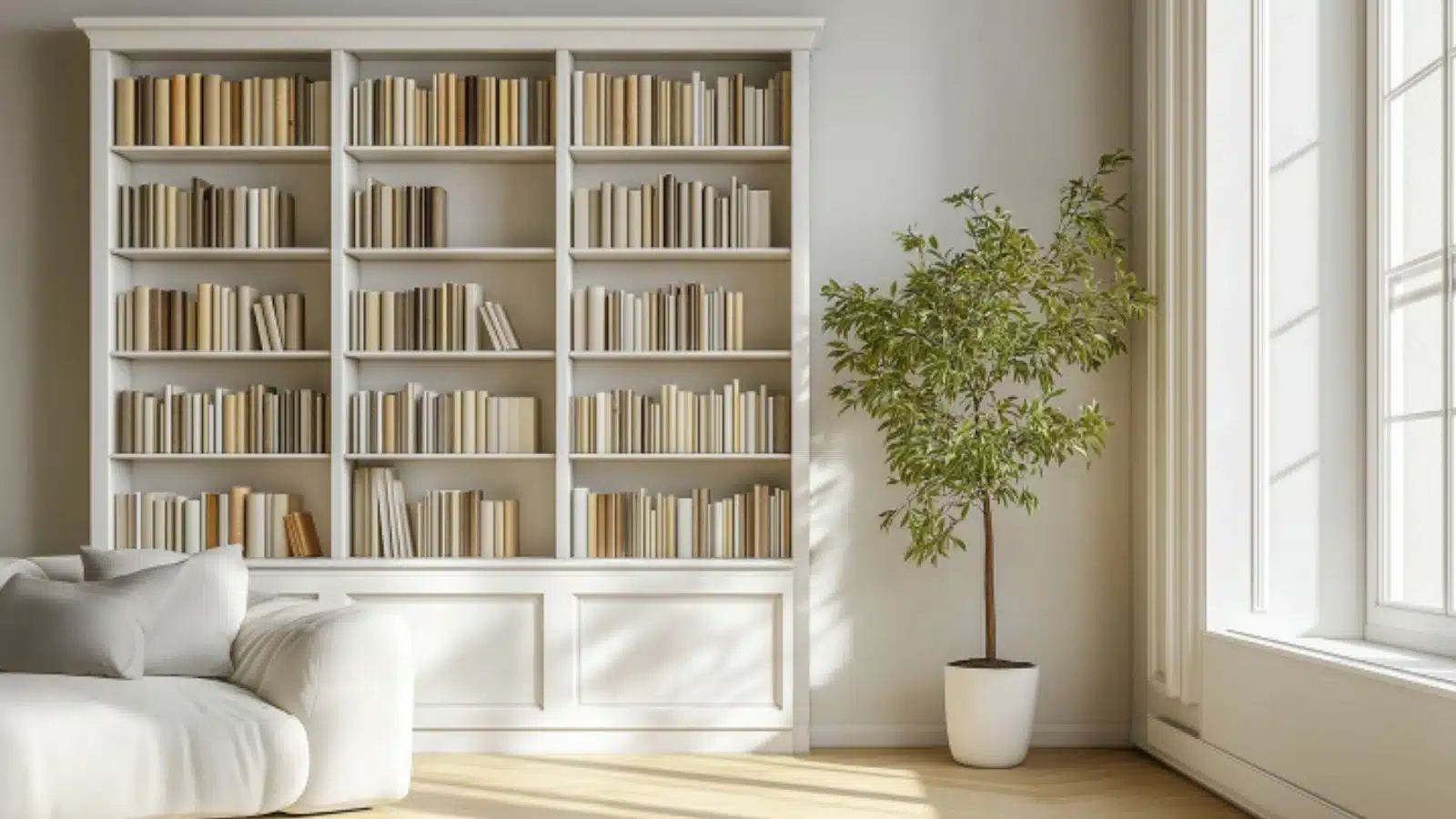How to Style Bookshelves in Living Room Like a Pro: Design Tips for a Polished, Personalized Look
Table of Contents
Bookshelves aren’t just for books—they’re the unsung heroes of living room design. Whether built-in, freestanding, or floating, a well-styled bookshelf can elevate the entire feel of your space. More than just functional storage, they offer the perfect canvas to showcase your personality, interests, and creativity.
According to interior design trends, styled shelving remains one of the most impactful (and affordable) ways to add depth, color, and texture to a living room. But styling bookshelves the right way requires more than just stacking a few novels and hoping for the best. There’s an art to mixing books, decorative objects, artwork, and greenery in a way that looks effortless yet intentional.
In this guide, we’ll walk you through exactly how to style bookshelves in the living room like a professional designer. From balancing proportions to choosing the right decor elements, you’ll learn how to create a cohesive, polished shelf that complements your living room style—whether it’s minimalist, traditional, modern, or cottagecore. Each section includes practical breakdowns, styling tips, and MidJourney image prompts to help bring your vision to life.
Start with a Clean Slate and a Vision
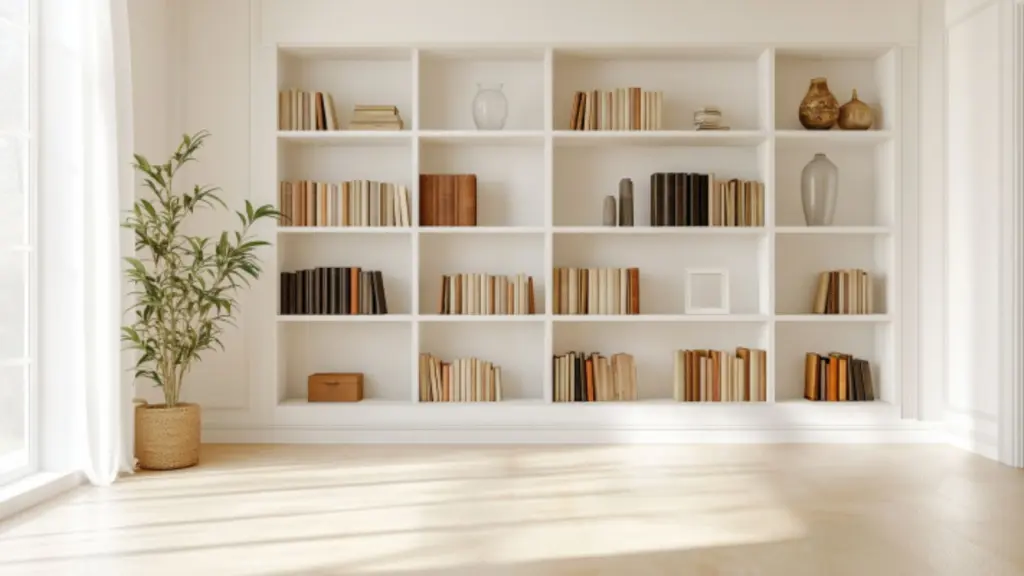
Before you start styling, it’s important to begin with a blank canvas. Take everything off your shelves and wipe them clean. Now is the time to edit your collection and clarify your vision.
Assess Your Shelving Structure
What type of bookshelf do you have? Is it tall and narrow, wide and short, built-in or freestanding? Each configuration will affect how you approach symmetry and spacing. Look at the number of shelves, their spacing, and whether they’re adjustable.
Set a Visual Goal
Decide on a look and feel that fits your living room style. Are you going for a minimalist vibe with negative space, or a layered, collected feel with lots of texture? Collect a few inspirational images and identify patterns you love—neutral color palettes, curated collections, balanced shapes, etc.
Table: Pre-Styling Prep Checklist
| Task | Purpose | Tip |
|---|---|---|
| Clear shelves | Start fresh | Dust and clean surfaces thoroughly |
| Declutter items | Keep only what you love | Donate or relocate excess decor |
| Define style direction | Establish a cohesive design goal | Use Pinterest or Instagram boards |
| Gather key pieces | Prep a mix of books and decor | Think texture, shape, and color |
Layer in Books: The Foundation of Every Shelf
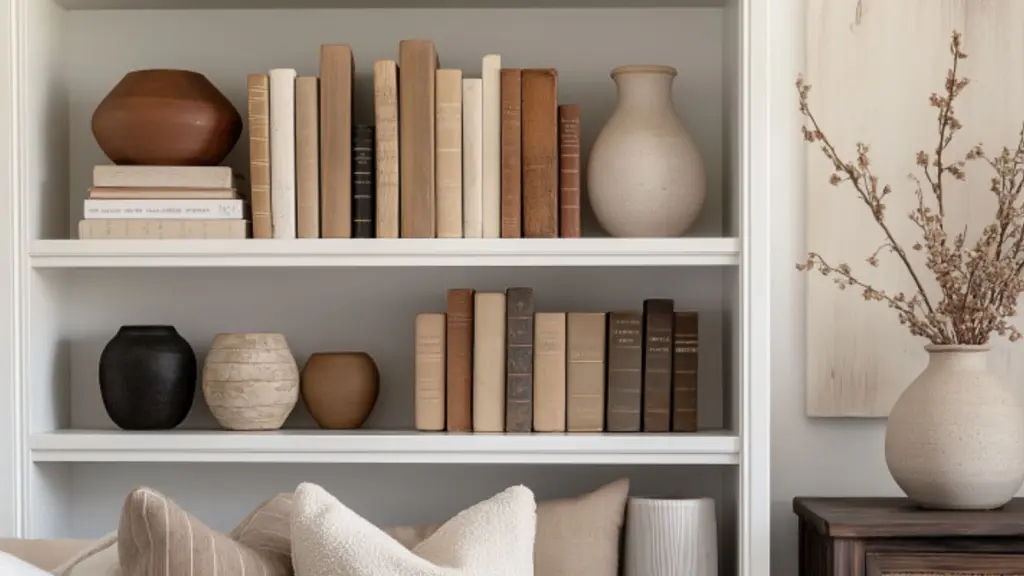
No bookshelf is complete without its namesake—the books. They’re the building blocks of your shelf styling, and how you arrange them makes a major difference.
Stack Vertically and Horizontally
Mix traditional vertical rows with horizontal stacks to create visual interest. Stacking horizontally helps break up monotony and serves as a natural pedestal for decorative objects like candles, sculptures, or vases.
Group by Color, Size, or Mood
For a curated look, group books by spine color or cover tone. Neutral tones offer calm sophistication, while colorful books bring energy. Size and subject matter can also help create themed zones.
Leave Breathing Room
Not every inch needs to be filled. Leave space between clusters to keep the shelf from feeling cluttered. A little negative space adds elegance and helps the eye move comfortably across the display.
Table: Book Arrangement Techniques
| Arrangement Style | Visual Impact | Best Paired With |
|---|---|---|
| Vertical Rows | Traditional and tidy | Framed art, vases |
| Horizontal Stacks | Casual and grounded | Candles, small sculptures |
| Color-Coded Groups | Bold or serene, depending on tone | Minimal decor for balance |
| Mixed Heights | Dynamic and organic | Layered with greenery or ceramics |
Add Decorative Objects to Create Layers and Depth
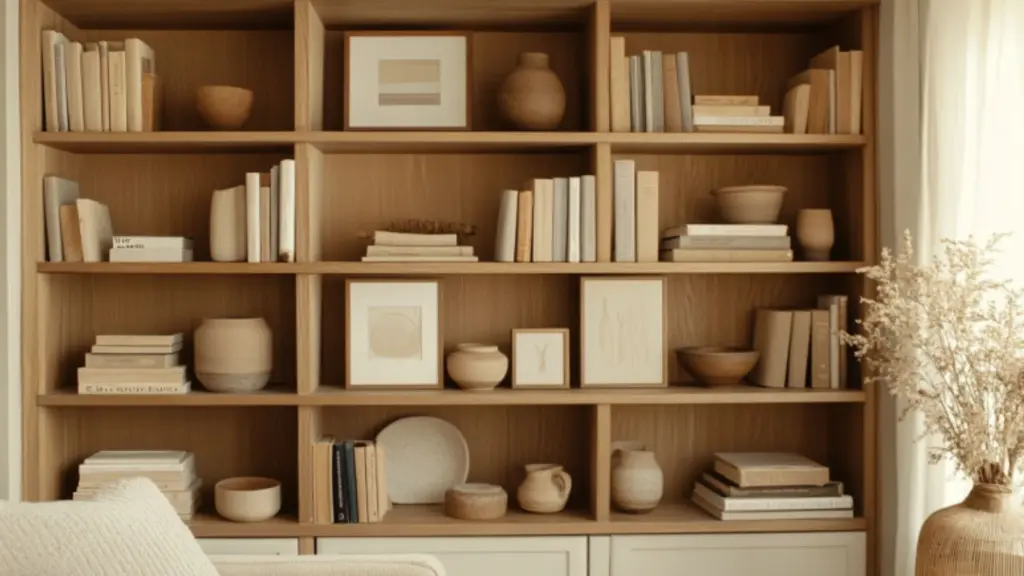
Once your books are in place, it’s time to add character. Decorative objects are what transform a bookshelf from storage to a statement.
What to Include
Choose a mix of textures and materials—ceramics, wood, glass, metal, and natural elements. Think sculptural objects, vintage trinkets, framed art, woven baskets, and candleholders. Vary shapes and sizes to add depth.
Styling in Groups of Three
The rule of threes works well in decor styling. Grouping items in threes (or other odd numbers) adds visual harmony and feels balanced without being too symmetrical.
Mix High and Low Elements
Use tall items like vases or picture frames to draw the eye upward, then balance with low-profile pieces like small bowls or stacked items.
Table: Decorative Accessories Guide
| Object Type | Adds This Effect | Placement Tip |
|---|---|---|
| Ceramic Vase | Softens the shelf visually | Place off-center on eye-level shelf |
| Framed Art | Adds personality and depth | Layer behind books or objects |
| Sculptural Object | Introduces movement | Use sparingly for high impact |
| Natural Elements | Warmth and organic texture | Try driftwood, geodes, or woven trays |
Use Artwork to Add Personality and Scale
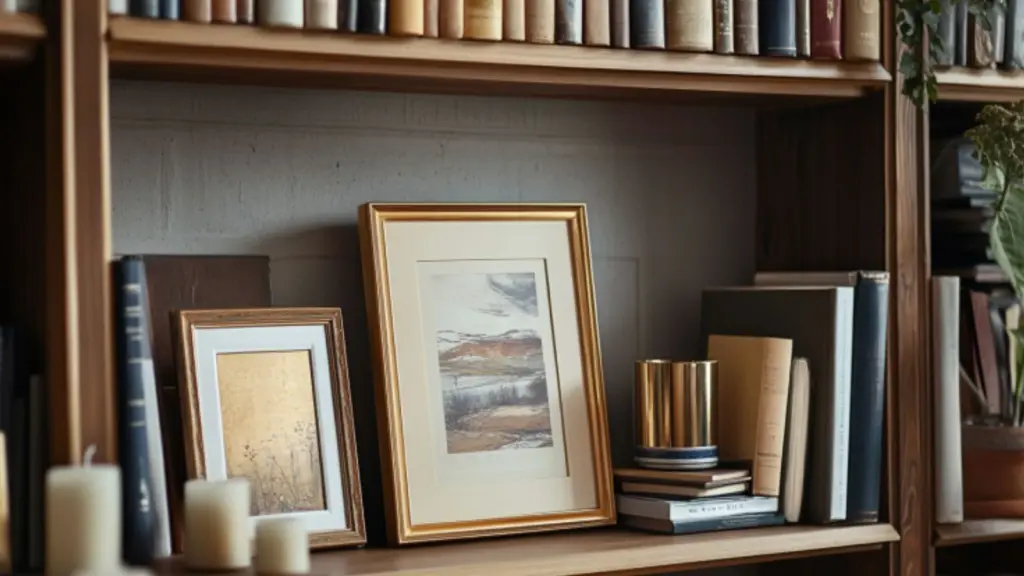
Bookshelves aren’t just for shelf-height decor—art adds height and a personalized touch. Whether it’s framed prints, canvas pieces, or small leaning frames, artwork helps break up horizontal lines and introduces visual storytelling.
Layer Art Behind Items
Place smaller pieces of framed art behind books or objects to add background depth. Overlapping frames with a stack of books or candleholder can create a polished, lived-in look.
Mix Frame Styles
Blend modern black frames with vintage gold, wood, or brass finishes. This eclectic approach feels curated rather than showroom-perfect.
Incorporate Different Heights and Widths
A mix of tall, narrow pieces and short, wide ones keeps the visual rhythm interesting. Use books or risers to elevate frames as needed.
Table: Styling Art Within Bookshelves
| Frame Type | Style Vibe | Where to Place |
|---|---|---|
| Thin Black Metal | Minimalist and modern | Eye-level shelves or narrow openings |
| Distressed Wood | Rustic or coastal | Lower shelves with other natural textures |
| Gilded Frame | Traditional and elegant | Upper shelves or near ceramic accents |
| No Frame (Canvas) | Organic and casual | Centered behind layered objects |
Incorporate Greenery for Freshness and Life
Every professionally styled bookshelf has one thing in common: greenery. Whether real or faux, plants breathe life into a display, soften harsh lines, and connect your living room to the natural world.
Best Plants for Shelves
Opt for small potted plants, trailing vines like pothos or string of pearls, or dried stems like eucalyptus or lavender for lower-maintenance appeal. Choose containers that suit your aesthetic—stoneware, terracotta, glass, or rattan.
Balance Placement
Use greenery to balance visual weight. If you have a heavy decor piece on the left side of one shelf, balance it with a trailing plant on the right side of another.
Faux vs. Real
If your shelves don’t get natural light or you’re not plant-savvy, high-quality faux plants offer the same visual benefits with no upkeep. Just be sure to fluff and clean them regularly.
Table: Greenery Options for Bookshelves
| Plant Type | Real or Faux | Styling Tip |
|---|---|---|
| Pothos (Trailing) | Real or faux | Let vines drape naturally over shelf edge |
| Mini Succulent | Real | Tuck between books for low-key greenery |
| Dried Lavender | Natural dried | Adds color and soft fragrance |
| Faux Fern Sprigs | Faux | Place in ceramic vase for texture |
Balance Symmetry and Asymmetry Like a Designer
A professionally styled bookshelf looks intentional, not rigid. That means balancing visual weight while allowing for variation across shelves.
Symmetry for Structure
Start with symmetry at the outer edges of your shelf, especially in built-ins. Use similar shapes or colors to anchor both ends, then build inward.
Asymmetry for Personality
Offset a heavy decor item with a grouping of lighter objects. Stack books higher on one side than the other. Angle frames or bowls slightly. These little shifts add energy and movement.
Step Back and Edit
After you style your shelves, take a step back. Look at the whole arrangement. Does anything feel too cluttered? Is one area too heavy? Editing is key—sometimes the most professional design choice is knowing what to remove.
Table: Symmetry vs. Asymmetry Tips
| Styling Element | Symmetrical Placement Tip | Asymmetrical Styling Tip |
|---|---|---|
| Book Arrangement | Match stack sizes on ends | Vary heights and placement |
| Object Grouping | Same number across shelves | Offset grouping with space |
| Greenery | Match plant type at both ends | Use trailing on one side only |
| Color Balance | Even tones left and right | One pop of color in center |
Conclusion
Styling bookshelves in the living room like a pro isn’t just about filling space—it’s about telling a story. The most beautifully styled shelves reflect your personality, balance form with function, and bring warmth and style to your space.
From layering books and greenery to incorporating art and curated objects, the process is both creative and practical. Thoughtful arrangements, attention to color and texture, and a willingness to step back and edit are what make the difference between clutter and a designer-level display.
Let your bookshelves become a quiet conversation piece in your home—a place where design meets meaning, and every shelf holds a bit of your story.

